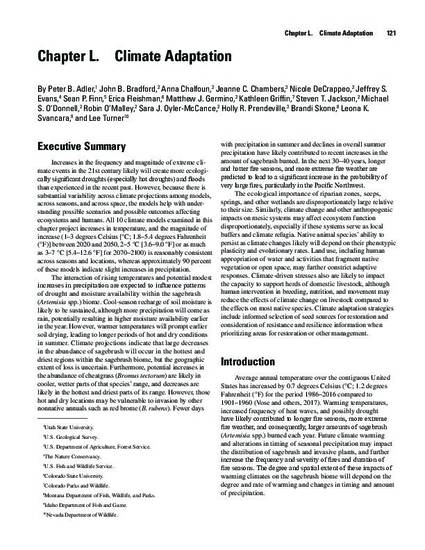
Contribution to Book
Climate adaptation
Sagebrush conservation strategy - Challenges to sagebrush conservation
(2021)
Abstract
Average annual temperature over the contiguous United States has increased by 0.7 degrees Celsius (°C; 1.2 degrees Fahrenheit (°F) for the period 1986-2016 compared to 1901-1960 (Vose and others, 2017). Warming temperatures, increased frequency of heat waves, and possibly drought have likely contributed to longer fire seasons, more extreme fire weather, and consequently, larger amounts of sagebrush (Artemisia spp.) burned each year. Future climate warming and alterations in timing of seasonal precipitation may impact the distribution of sagebrush and invasive plants, and further increase the frequency and severity of fires and duration of fire seasons. The degree and spatial extent of these impacts of warming climates on the sagebrush biome will depend on the degree and rate of warming and changes in timing and amount of precipitation.
Disciplines
Publication Date
2021
Editor
Remington, Thomas E.; Deibert, Patricia A.; Hanser, Steven E.; Davis, Dawn M.; Robb, Leslie A.; Welty, Justin L.
Publisher
U.S. Geological Survey
DOI
https://doi.org/10.3133/ofr20201125
Citation Information
Peter B. Adler. "Climate adaptation" Sagebrush conservation strategy - Challenges to sagebrush conservation (2021) p. 121 - 137 Available at: http://works.bepress.com/peter_adler/280/
